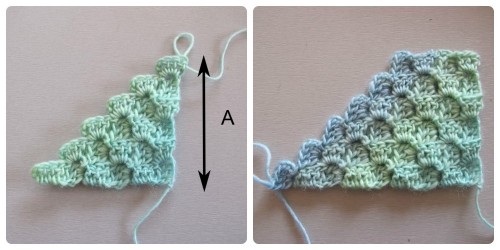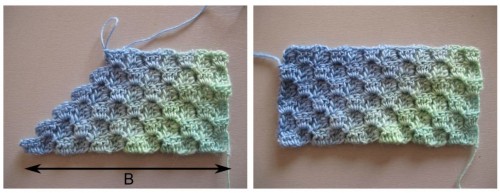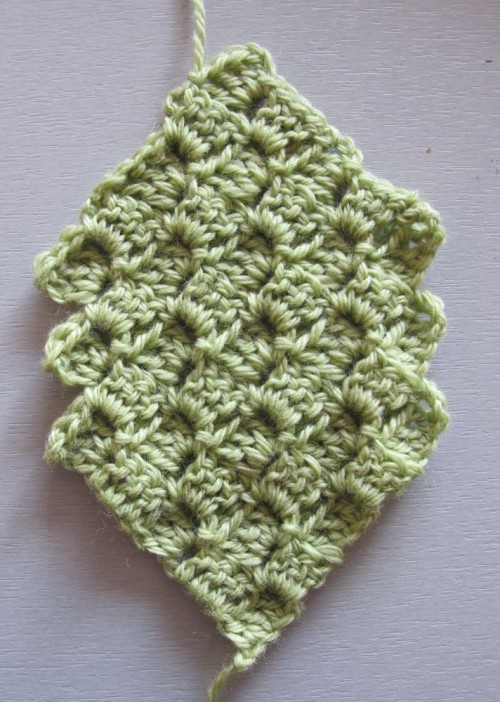In the shop
This month, the news is about yarns and hooks!
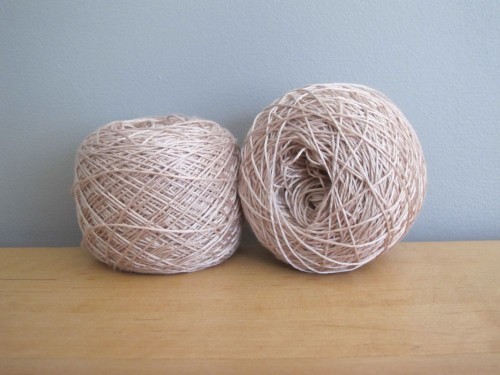
The laceweight bamboo is now available in the colour sand, soft to the touch and to the eye, with a lovely shine that makes you almost want to eat it! (It also makes me think of a light toffee).
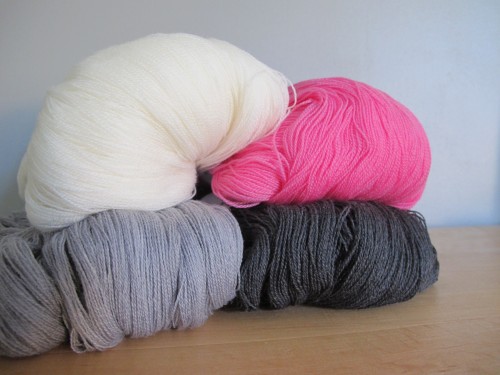
I have also added a slate grey to my lightest yarn range, the cobweb merino. This dark grey is slightly heathered.
And to crochet all this yarn, I have extended my range of Tulip hooks.
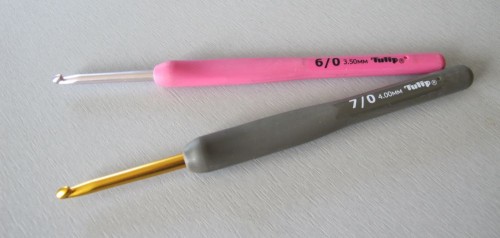
In order to provide you with a larger choice of sizes, I have added the Etimo Gold hooks to the Etimo Rose ones you already know and love.
On the blog
A retrospective of crochet shawls created specifically for the bamboo laceweight yarn – to rediscover and to interpret in bamboo or in other laceweight yarns.
C2C: shapes and variations
In the January newsletter on the basics of C2C and in the February newsletter on colour changes, I showed you only squares. This time we will have a look at how to construct other shapes in the C2C stitch pattern, and how you can create variations in the stitch itself.
For all those who are crocheting blankets in C2C, it is necessary to know how to construct a rectangle. So let’s do that!
Start working as for a square, increasing at both edges. When side A (see photo) is the right height for the short end of the rectangle, start decreasing at this edge while continuing to increase at the other edge.
When side B is the right length for the long side of the rectangle, start decreasing at this edge too. This means that you will now decrease at both edges until the rectangle is finished.
I played around a little differently with increases and decreases to obtain this shape:
Here I increased at both edges until I reached the desired width (5 blocks in my little swatch). Then I alternated one row with decreases at both edges and one row with increases at both edges. When I thought my swatch was long enough, I simply decreased at both edges on every row to the tip. This created a sort of lozenge with pointy edges, but you can, of course, work it longer (and wider) to make a scarf, a stole, or perhaps a table runner.
While searching for information on the C2C technique I came across variations on the basic stitch pattern (the one constructed with dc’s). One of these variations is based on hdc’s.
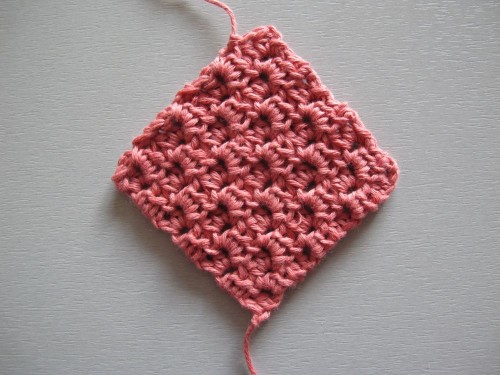
Each block is made from 2 hdc and 2 ch. The increase blocks (and the first block) are worked as follows:
Ch 4, 1 hdc in 3rd ch from the hook, 1 hdc in last ch.
The stitch pattern is more « fine-grained », and the fabric a little firmer.
Another variation is to use trebles to construct the blocks.
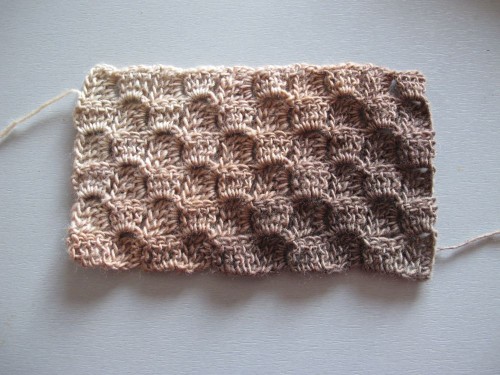
These blocks are made with 4 trebles and 4 ch. Increase blocks (and the first block) are made as follows:
Ch 8, 1 tr in 5th ch from the hook, 1 tr in each of remaining 3 ch.
Using trebles, the fabric is more supple and drapey – it would adapt well to scarves or stoles.
Mixing these variations on the C2C stitch pattern with different increases and decreases makes it possible to obtain new and quite original shapes.
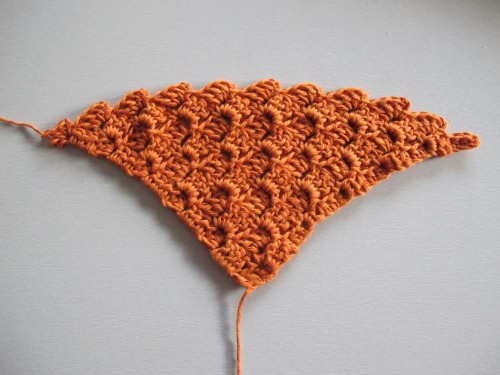
This is a triangle in which I’ve simply used blocks with 3 hdc and 2 ch for the first and last block in every row. Elongated triangle or lotus flower?
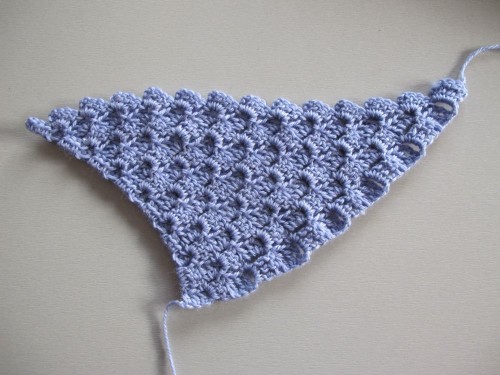
Here I will not even try to give a name to the shape. Basically, it’s still a triangle. At the left edge, I used the same blocks as for the lotus-flower triangle at the end and at the beginning of each row. At the right edge, the first or last block of every row was worked using 3 tr and 4 ch.
Next month, we will conclude our exploration of the C2C stitch with a short discussion of borders and a simple pattern.
Until then, I hope you will experiment with shapes and variations, and share your experiences in the comments below!
See you soon!


